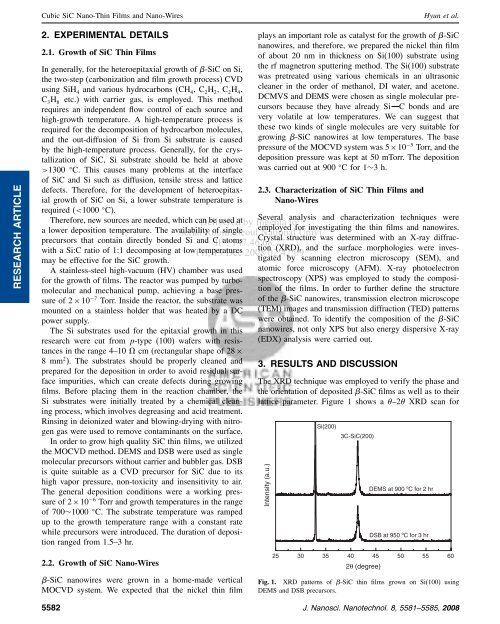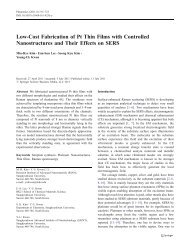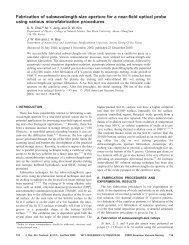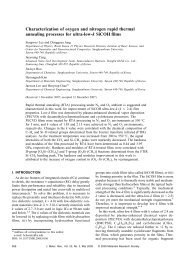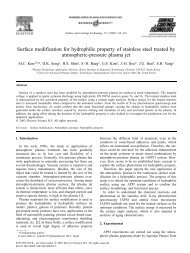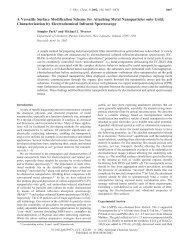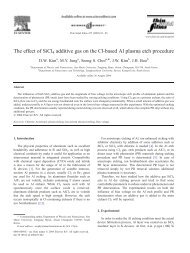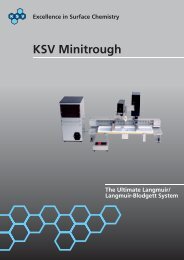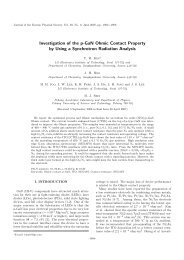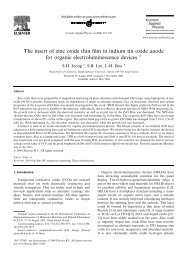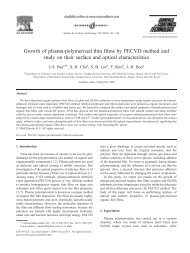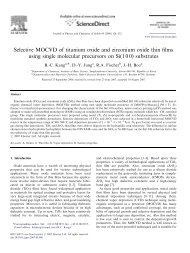Cubic SiC Nano-Thin Films and Nano-Wires: High Vacuum Metal ...
Cubic SiC Nano-Thin Films and Nano-Wires: High Vacuum Metal ...
Cubic SiC Nano-Thin Films and Nano-Wires: High Vacuum Metal ...
Create successful ePaper yourself
Turn your PDF publications into a flip-book with our unique Google optimized e-Paper software.
<strong>Cubic</strong> <strong>SiC</strong> <strong>Nano</strong>-<strong>Thin</strong> <strong>Films</strong> <strong>and</strong> <strong>Nano</strong>-<strong>Wires</strong><br />
Hyun et al.<br />
RESEARCH ARTICLE<br />
2. EXPERIMENTAL DETAILS<br />
2.1. Growth of <strong>SiC</strong> <strong>Thin</strong> <strong>Films</strong><br />
In generally, for the heteroepitaxial growth of -<strong>SiC</strong> on Si,<br />
the two-step (carbonization <strong>and</strong> film growth process) CVD<br />
using SiH 4 <strong>and</strong> various hydrocarbons (CH 4 ,C 2 H 2 ,C 2 H 4 ,<br />
C 3 H 8 etc.) with carrier gas, is employed. This method<br />
requires an independent flow control of each source <strong>and</strong><br />
high-growth temperature.A high-temperature process is<br />
required for the decomposition of hydrocarbon molecules,<br />
<strong>and</strong> the out-diffusion of Si from Si substrate is caused<br />
by the high-temperature process.Generally, for the crystallization<br />
of <strong>SiC</strong>, Si substrate should be held at above<br />
>1300 C.This causes many problems at the interface<br />
of <strong>SiC</strong> <strong>and</strong> Si such as diffusion, tensile stress <strong>and</strong> lattice<br />
defects.Therefore, for the development of heteroepitaxial<br />
growth of <strong>SiC</strong> on Si, a lower substrate temperature is<br />
required (


